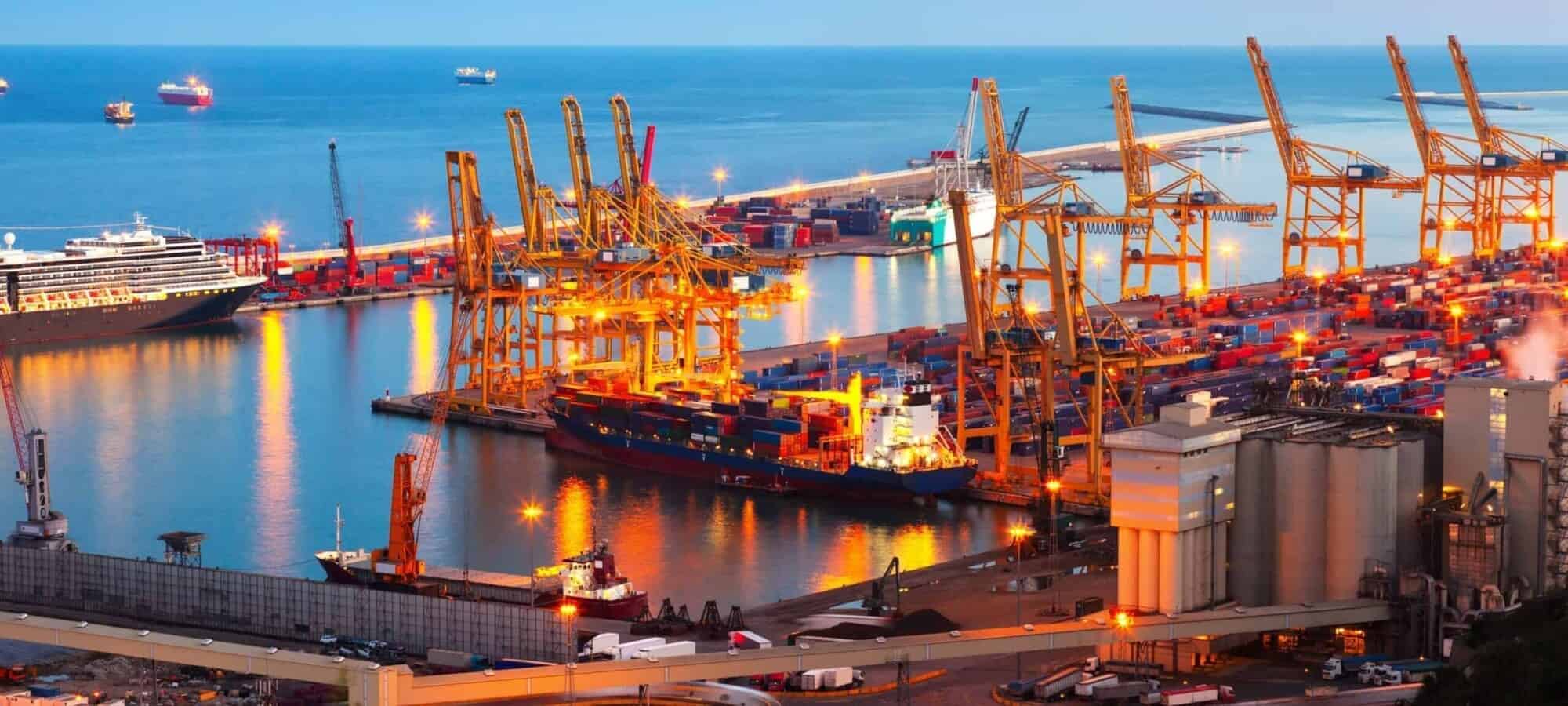How to move internationally hassle-free? How to easily ship personal belongings & furniture overseas? Follow our guidelines and tips to help you prepare for your international move to South America, Central America, or The Caribbean.
Moving to South America, Central America, or The Caribbean, presents a unique set of challenges but the right support can make things right. Many transportation companies claim they can help when it comes to shipping your belongings and furniture overseas. However, it is important that you carefully pick the right freight forwarder since not all offer the same quality service. A few things to pay attention to include:
- The shipping method
- The type of cargo container
- The packing, loading & unloading process
- The cost
- The storage facility
- The language barrier
- The customs & immigration process
Don’t let all this intimidate you. We have prepared for you a comprehensive guide on how to move internationally, that will help you make the process easier. Follow the steps below, to make your door-to-door relocation to South America, Central America, or The Caribbean, easier and smoother:
1) What personal belongings are allowed to be transported in an international move?
Whether you are moving to Brazil, Panama, Colombia, Cuba, or any other country in Central America, South America, or The Caribbean; you need to understand that each country has its own set of laws and regulations when it comes to foreigners moving and living there.
Most Latin American countries allow foreigners to ship personal belongings overseas to their land for as long as they have the required permissions. This includes shipping furniture, appliances, clothes, and vehicles including cars and motorcycles overseas to your new home. However, remember that rules change from country to country, and some are very strict, especially when it comes to importing used vehicles.
OUR ADVICE: Choose an international mover who fully understands the customs and regulations of the Latin American country you are moving to.
Some tips to remember:
It is important to do some research before moving to South America, Central America, or the Caribbean so that you are fully aware of restricted and prohibited items. Most countries have limitations on the following:
• Cleaning products
• Liquors and alcohol
• Flammable products
• Fruits, vegetables, or any type of fresh food
• Live animals and plants
• Medicine and perfumes
• Weapons
LAC’s Expertise:
At Latin American Cargo, we aim to ensure you face no trouble during, before, or after the move. We always go the extra mile to make sure that there are no compliance and regulatory issues when your goods land in your new country of residence.
2) What type of information and documents are required for customs clearance?
When moving internationally, you will need certain documents to get your household goods entry into your new country of residence. These typically include a copy of your passport & visa, an inventory of goods being shipped, and specific forms for importation.
Unfortunately, paperwork requirements and duty tax amounts and percentages do change often without notice. Moreover, customs requirements vary greatly depending on the country you will be moving to.
A reputable international mover will be able to help you find the latest documentation required, however it is still your responsibility to make sure that you have the correct documentation for your personal situation.
OUR ADVICE: To know more about the latest customs rules, we recommend that you contact both the consulate of the country you will be moving to, and the officials in your current country of residence (Such as the Official Government of Canada Travel Information or the Bureau of Consular Affairs of the US Travel State Government).
Some tips to remember:
• Applicants moving out of Canada will require a B13a Export Declaration form.
• Applicants moving out of the USA will require an AES Export Declaration form.
LAC’s Expertise:
All export documentation can be handled directly by LAC to ease your moving process.
As we do not offer customs clearance services at destination for personal shipments, we recommend that you contact your local consulate to get a list of reputable customs brokers. They will be able to help you clearing your items, and obtaining duty-free entry of your used household goods and personal effects.
3) What shipping method to choose for my international move?
Transporting commercial goods from the USA or Canada to a Latin American country like Mexico, Peru, Argentina, and The Dominican Republic is very easy due to the availability of several shipping options:
OUR ADVICE: When it comes to moving personal belongings overseas, ocean container shipping is the most recommended solution. It is more affordable than other transportation methods such as air freight, and often the only option to ship weighty goods, such as furniture, and a vehicle at the same time.
4) What type of cargo container should I choose when shipping personal belongings overseas?
You can choose from a variety of options including refrigerated, ventilated, and insulated containers. However, dry storage containers are commonly used for shipping household goods and furniture overseas.
These containers are available in various sizes, however, most people opt for 20-foot and 40-foot standard cargo containers as they can accommodate most household goods and big items.
20-ft Container
- Internal Dimensions: 19′4″ long x 7′9″ wide x 7′10″ tall (5.89m x 2.35m x 2.39m)
- Internal volume: 1,170 ft³ (33.2 m³)
- Payload Capacity: 62236.49 lbs (28230 kg)
20ft cargo container is the best suitable option for 1-2 bedroom moves or a car with a limited amount of boxes and personal belongings.
OUR ADVICE: 20ft containers are ideal for shipping overseas weighty cargo such as heavy boxes, as the price per square foot is more expensive than a 40-foot container.
40-ft Container
- Internal Dimensions: 39′6″ long x 7′9″ wide x 7′10″ tall. (12.03m x 2.35m x 2.39m)
- Internal volume: 2,391 ft³ (67.7 m³)
- Payload Capacity: 58863.42 lbs (26700 kg)
40ft cargo container is best suitable for larger residential moves such as 3 to 5 bedrooms. It is also big enough to accommodate a car, plus a standard 2/3 bedroom move.
OUR ADVICE: 40ft containers are ideal for shipping lighter voluminous cargo, such as furniture and all types of personal items with a large footprint.
LAC’s Expertise:
Choosing the right container for your international move can help you save money and ensure your goods reach the final destination safe and sound. Let our experts help you pick the right size and type of container according to the volume and weight of your belongings.

Depending on the volume of your personal belongings and furniture you would like to ship overseas, you will have to choose between a standard 20-ft or a 40-ft dry storage container for your international moving adventure.
5) Should I choose Full Container Load (FCL) or Less than Container Load (LCL)?
You will have to choose between Full Container Load (FCL) or Less than Container Load (LCL) when moving your household goods overseas. Let’s understand the two methods:
What is Less than Container Load?
This method involves sharing the space of a container with other shippers. This can be a suitable option for shippers that only need to ship a small number of personal items. However, it does have some risks:
- If your cargo exceeds 10 cubic meters, then choosing LCL over FCL will result in more shipping expenses.
- You will not have control over the items other people load onto the container.
- LCL shipping service sticks to a specific departure schedule – usually bi-monthly or monthly.
- Your shipment can get delayed if another shipment in your shared container has its paperwork not filled in properly or is retained at customs.
What is Full Container Load?
Full Container Load is a method of intermodal or oceanic transportation that allows you to have the entire container to yourself. This is the best option for people moving to Latin America as it offers the following benefits:
- You get full control and security as you don’t have to share the container with others.
- It’s faster since you don’t have to worry about departure schedules.
- Available in more regions than most LCL shipping services.
- Despite coming with a hefty price tag, the FCL method will also be a more economical option than LCL, if you need to ship more than 10 cubic meters of personal effects.
OUR ADVICE: Therefore, as LCL shipping is not available for all destinations and also considering the higher risks, we highly recommend that you prefer FCL for your international move. Get in touch with us today and start shipping your furniture and personal belongings overseas with our FCL shipping services.
6) What if I want to ship my personal vehicle overseas along with my household goods?
Shipping your vehicle is usually more affordable than buying a new car after your move. Fortunately, there are several ways to get it done:
RORO shipping
Depending on how close you are to a RORO shipping port, Roll-On/Roll-Off ocean freight is the cheapest option if you are looking to ship just your vehicle for your international relocation.
RORO shipping works with specialized ocean carriers designed to internationally ship all kinds of wheeled vehicles including cars, trucks, vans, buses, as well as construction and agricultural equipment.
RORO shipping is a streamlined approach to the transportation of cars, vans, mobile homes, and more, anything that can be rolled on and off the shipping vessel in port.
Container shipping
If you need to ship both your vehicle and your household goods (such as furniture, electronics, home appliances, or clothes) then you should consider moving your car with your household goods and personal items inside a 40ft ocean container.
It is usually the most affordable and convenient shipping option when moving to South America, as it keeps all your personal effects, vehicles included, in the same transportation cluster.
On the other hand, the Roll-On Roll-Off method requires all of your personal property to be removed from your vehicle and shipped using other methods. Hence, it proves to be more hectic and costlier.
7) How should I pack my personal belongings?
Be prepared before the moving day comes, by following these simple rules:
- Invest in high-quality packing materials and equipment
Use strong boxes, bubble wrap, furniture covers, and other quality packing supplies to securely pack up your belongings.
- Clearly label all boxes on the top and sides
It will allow you to save time during the loading and unloading process. - Consider selling items that you do not need or can be easily replaced after the move
To ship or not to ship is the question. International shipping costs are directly impacted by the weight and volume of the cargo being shipped during a long-distance move.
If you can, avoid shipping heavy items such as furniture overseas, unless there is a sentimental attachment or an unusually high value. In some cases, it might be more affordable to sell such goods, receive money, and buy these items when you land in your new country of residence.
Some tips to remember:
Keep your essential documents with you during the move. Items that should not be packed in the international shipping container include:
• Cash and credit cards,
• Passports and visas with your new address,
• Inoculation records,
• High-value jewelry,
• Vital medical equipment or medicine,
• All documents related to your moving: packing list, export, and import documentation, container information, etc.
8) How should I load the container with my personal belongings and furniture?
Follow these tips during the loading process so that your personal goods remain safe during transit and you have no issues when unloading containers:
Load to make unloading easier
All your items should already be packed, labeled, and organized for easy loading into the container.
Load the container carefully
Unassemble all items to increase safety and security, and maximize space.
Pack lighter items atop heavier items to prevent crushing during rocking and jarring out at sea.
The container should be packed as tightly as possible using straps and braces to hold all items securely in place throughout the move and prevent transit damage.
Pay attention to weight distribution
The total weight of the items when you load a container should be as evenly distributed as possible.
To prevent load shifting during transportation, all goods should be evenly spread out throughout the space.
Cargo should not be stacked on one end and spread out on the container floor on the other.
Loading can end up taking a lot of time so expect some delays, hence build in extra time in your schedule. You should let professionals take care of things; however, if you decide to do the loading all by yourself, then make sure to find help.
Some tips to remember:
• Load items by the room.
• Keep large items such as sofas and beds in the back of the container.
• It may be a good idea to load your kitchen items last so they will be the first things to be moved in and made accessible.
9) Should I take additional shipping Insurance for my international move?
Purchasing additional insurance for your international move to South America, Central America, or The Caribbean is highly recommended. Cargo shipped internationally to Latin America can undergo a good deal of handling and environmental strains.
A shipping container can experience as much as 50 degrees of tilt during transportation. While all cargo companies provide liability insurance, it is often insufficient protection for the value of your belongings. Some companies offer a liability limit as low as $500 for an entire container!
OUR ADVICE: Acquiring additional international moving insurance can ensure that any damages to your valuables are properly covered.
10) What if I need more information on how to ship my personal belongings and furniture overseas?
Moving to another country is a bold journey to take and the logistics can be quite overwhelming. Don’t let your international relocation stress you out. Our team is always prepared to answer any questions on how to move internationally to South America, Central America, or the Caribbean. We are dedicated to offering you a worry-free relocation experience by providing reliable, affordable, safe, and secure solutions to help make sure your belongings make it to your new home.
LAC’s Expertise:
We are available 24/7 to assist you in resolving any uncertainty you may have on shipping your furniture and personal belongings overseas.
We offer comprehensive and specialized international moving packages that will adapt to your specific requirements and budget for your move from the US and Canada to Brazil, Costa Rica, or anywhere throughout Latin America.
Some tips to remember:
All our other tips and hacks on how to move internationally are just a few clicks away:
• Discover all the international relocation services and package options we offer.
• Visit our international moving and personal effects shipping FAQ to get answers to all your questions.
Moving to South America and shipping personal belongings & furniture overseas can be easy with the right freight forwarding experts by your side. Contact Latin American Cargo today for your international move and get a free estimate now for your shipping container!


 LAC Team
LAC Team


